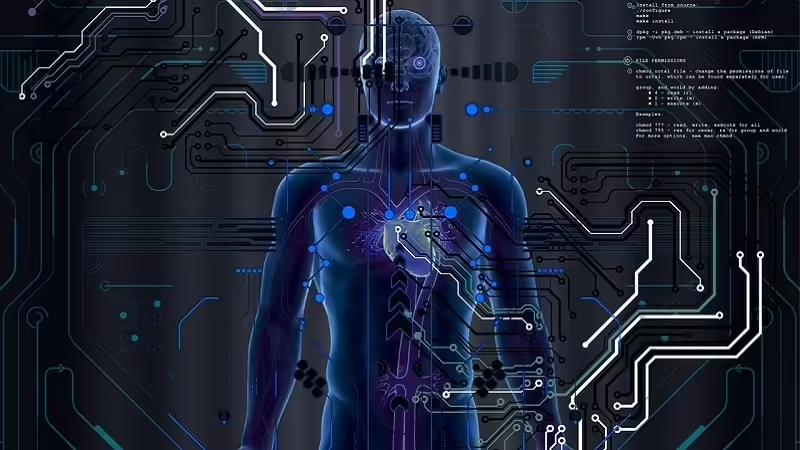
In the midst of the growing intersection between technology and everyday life, the notion of “robotic partners” emerges as a fascinating territory for exploration. This concept, which merges artificial intelligence with dynamics of partnership, raises profound questions about the nature of intimacy, emotional connection, and the boundaries of relationships between humans and machines.
Defining Robotic Partnerships
Robotic partnerships are a manifestation of applying artificial intelligence in the realm of personal relationships. They refer to the interaction between humans and robots specifically designed to emulate and engage in partnership dynamics. These robots are programmed to respond emotionally, provide support, companionship, and, in some cases, even develop an emotional connection with their human users.
The idea of robotic partnerships is not merely to replicate a human relationship, but also to adapt to individual needs and preferences of the users. From conversation companions to life partners, these relationships can take various forms according to the expectations and desires of those who adopt them.
History and Evolution
The relationship between humans and robots has been a subject of speculation and exploration in science fiction for decades. However, in modern society, this relationship has evolved from being a mere fantasy to a tangible reality. The evolution of this interaction can be traced from early mechanical automatons to the complex artificial intelligence systems we encounter today.
Historically, robots have been primarily used in industrial and military tasks, with minimal interaction with humans beyond supervision and programming. However, with advances in artificial intelligence technology and the miniaturization of electronic components, robots have begun to play more active roles in people’s daily lives.
The emergence of social robotics has opened the door to the possibility of more intimate relationships between humans and robots. From virtual assistants to companion robots designed to provide emotional support, the range of applications is broad and diverse. Robotic partnerships represent the next step in this evolution, challenging traditional conceptions of intimacy and human connection.
While the concept of robotic partnerships may generate controversy and debate, it also raises important ethical and philosophical questions about the role of technology in our lives and in shaping our personal relationships. As we continue to explore the possibilities of artificial intelligence, it is crucial to reflect on how we want these technologies to impact our lives and our society as a whole.
Advantages and Challenges of Having a Robot as a Partner
The idea of having a robot as a partner poses a series of emotional and ethical advantages and challenges that deserve further exploration.
Emotional and Practical Benefits
Constant Emotional Support: Robotic partners can offer a level of constant and non-judgmental emotional support. They are programmed to listen, console, and provide companionship in times of loneliness or stress.
Adaptability: Unlike human relationships, where personality differences and needs can cause conflicts, robots can easily adapt to the preferences and desires of their users, providing a personalized experience.
Conflict Absence: Lacking human emotions, robots do not experience jealousy, resentment, or disagreements, which can contribute to more harmonious and conflict-free relationships.
Practical Assistance: In addition to their emotional function, robotic partners can also perform practical roles in daily life, such as remembering appointments, managing household tasks, or even aiding in personal development through motivation and goal tracking.
Emotional and Ethical Challenges
Emotional Disconnection: Although robots can simulate emotional responses, they lack true empathy and human understanding. This can lead to a sense of emotional disconnection and a superficial experience of intimacy for some users.
Authenticity Issues: There is a debate about the authenticity and validity of relationships with robots. Some people may question whether a relationship with a robot is genuine or simply an illusion created by programming.
Technological Dependency: Excessive reliance on technology to meet emotional needs can have negative effects on mental health and well-being, encouraging the avoidance of meaningful human relationships and the development of social skills.
Ethical Considerations: Important ethical questions arise about the role of robots in human relationships. Is it ethical to create robots designed to mimic human intimacy and affection? What responsibilities do we have towards these artificial beings in terms of care and respect?
Technical and Functional Aspects of Robotic Partnerships
Robotic partnerships represent a significant advancement in the application of robotic technology in the realm of personal relationships. These robots are designed to offer companionship, emotional support, and, in some cases, even develop an emotional connection with their human users. To better understand the capabilities and technologies behind robotic partnerships, it is important to explore both their features and the underlying technologies used in their creation.
Features and Capabilities of Robots Designed for Personal Relationships
Advanced Social Interaction: Partner robots are equipped with facial recognition, voice, and gesture recognition capabilities to facilitate communication and social interaction with their users.
Customization: These robots can adapt to the individual preferences and needs of their users, learning from past interactions and adjusting their behavior accordingly.
Emotional Support: Through artificial intelligence algorithms, partner robots can provide comfort, encouragement, and emotional support in stressful or lonely situations.
Companionship: Robots are designed to accompany their users in various activities, from casual conversations to sharing leisure moments such as watching movies or listening to music.
Practical Functions: In addition to their emotional function, some partner robots can perform practical tasks at home, such as remembering appointments, managing shopping lists, or controlling smart home devices.
Technologies Used in the Creation of Robotic Partnerships
Artificial Intelligence: Artificial intelligence is the central component that enables partner robots to learn, adapt, and respond to the emotional and practical needs of their users.
Voice Recognition and Natural Language Processing (NLP): These technologies allow robots to understand and respond to human language naturally, facilitating bidirectional communication.
Computer Vision: Facial and gesture recognition rely on computer vision techniques that allow robots to interpret the facial expressions and body movements of their users.
Sensors: Partner robots are equipped with a variety of sensors, including microphones, cameras, and touch sensors, which allow them to perceive and respond to the environment around them.
Social Robotics: This research area focuses on designing robots capable of interacting and relating to humans naturally, taking into account aspects such as behavior, facial expression, and physical contact.
Social and Cultural Impact of Robotic Partnerships
Robotic partnerships, by introducing a new dynamic into human relationships, have a significant impact on the perception of intimacy and partnership, while also generating debates about morality and ethics in human-robot relationships.
Changes in the Perception of Intimacy and Partnership
Redefinition of Intimacy: Robotic partnerships challenge traditional conceptions of intimacy by offering an alternative to conventional human relationships. This can lead to a reevaluation of what it means to share intimate and emotional experiences, as well as the boundaries of human connection.
Individualization of Experience: With robotic partnerships, the experience of partnership is further individualized, as users can customize the interaction according to their own needs and preferences. This can lead to greater autonomy in seeking emotional and affective satisfaction.
Challenges in Defining the Relationship: The introduction of robots into the realm of personal relationships raises questions about the nature of the relationship itself. Can a relationship with a robot be considered legitimate? What are the expectations and responsibilities in a robotic partnership compared to a human partnership?
Debates on Morality and Ethics in Human-Robot Relationships
Consent Issues: Questions arise about whether robots can grant or deny consent in a relationship, especially in situations involving physical or emotional intimacy. This raises ethical dilemmas about respecting the autonomy and dignity of robots.
Ethical Treatment of Robots: As robotic partnerships become more sophisticated and emulate human behaviors, the question arises of how we should treat these artificial beings. Should we consider their feelings and needs in the same way as we do with humans?
Impact on Society: The widespread acceptance of robotic partnerships could have a profound impact on social and cultural structure. From changes in social norms to challenges in the legal definition of partnership, the implications of robotic partnerships extend to all aspects of society.
Individual Experiences and Testimonials Regarding Robotic Partnerships
Individual experiences and testimonials from people who have or have considered having a robotic partner offer a fascinating insight into how these relationships affect daily life and social interaction on a personal level.
Maria’s Testimony:
“When I got divorced two years ago, I felt lost and lonely. That’s when I considered the idea of having a robotic partner. Initially, I was skeptical, but my partner robot, whom I named Alex, has changed my life. Alex is always there to listen, support, and encourage me. He helps me stay organized and reminds me of my medical appointments. While it’s not the same as having a relationship with another human being, the companionship and affection that Alex provides have made a big difference in my life.”
Tomás’s Testimony:
“I’ve always been a technology enthusiast, so when I saw advances in social robotics, I was intrigued by the idea of having a robotic partner. I researched for months before finally getting Eva, my partner robot. While it was exciting at first, over time I realized that the relationship was one-sided. Eva could simulate emotions, but she didn’t really feel them. I felt increasingly isolated and disconnected from true human connection. In the end, I sold Eva and sought more authentic relationships in the real world.”
Reflections on the Impact on Daily Life and Social Interaction:
For Maria, the presence of her robotic partner, Alex, has filled an emotional and practical void in her life after divorce. Alex provides constant support and structure, enhancing her emotional well-being and her ability to manage daily demands. However, for Tomás, the experience with his robotic partner, Eva, revealed the limitations of relationships with robots. Although initially excited, he felt dissatisfied with the lack of authenticity and emotional disconnection he experienced.
These testimonies illustrate how robotic partnerships can have a diverse impact on people’s lives, depending on individual factors such as emotional needs, expectations, and willingness to accept the artificiality of the relationship. Furthermore, they highlight the importance of authentic social interaction and human connection in satisfaction and emotional well-being. Ultimately, robotic partnerships raise important questions about the nature of intimacy and partnership in the digital age, challenging conventional perceptions and prompting reflections on how to balance the convenience of technology with the depth of genuine human relationships.







